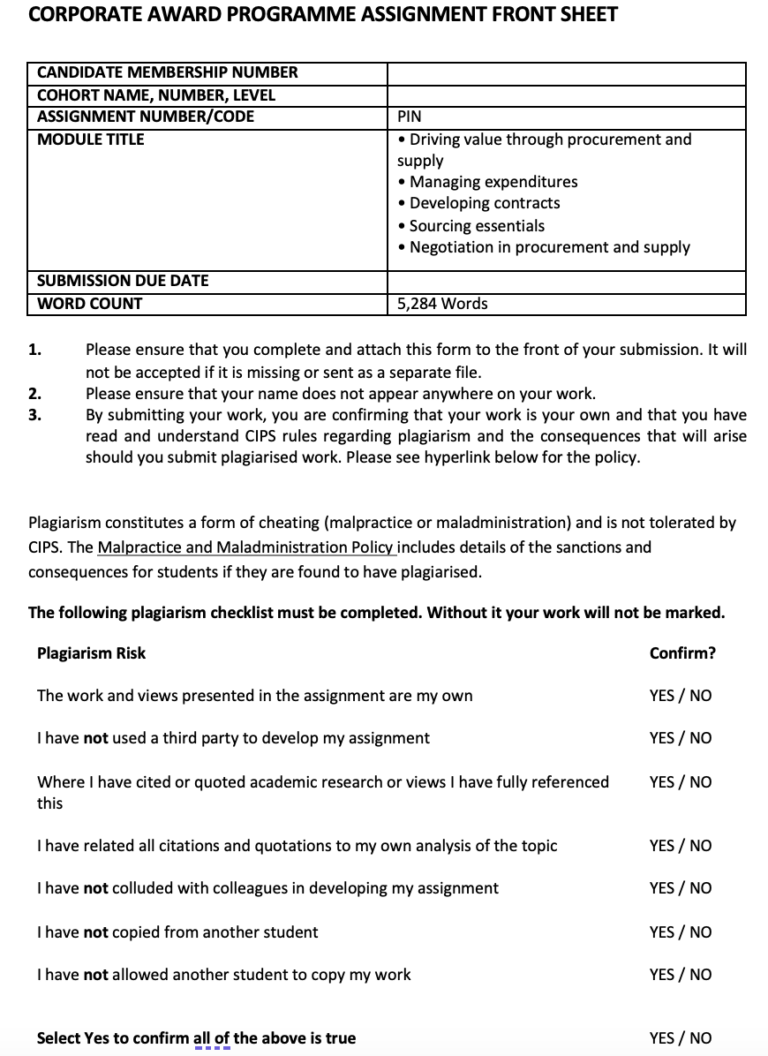(Solution) 7C002 Question 1: Wellbeing Strategies benefit Stakeholders within an organisation
CIPD Level 7
7C002- People Management & Development Strategies for Performance

New User Gifts
First Order Deal get Ksh 200 Off.
£ 20.00 Original price was: £ 20.00.£ 10.00Current price is: £ 10.00.
Payment Methods:
Description
Solution
Promotion and support of staff wellbeing is at the core/heart of organisations championing better work and working lives. According to CIPD (2023), an effective wellbeing strategies has a positive implication in delivering mutual-based benefits for people, organisations, economies and communities. The wellbeing strategies means creation of an environment which holistically promote state of contentment benefitting different stakeholders within organisations. To achieve this, CIPD (2023) note that the people practice professionals ought to initiate a holistic framework for supporting employees physical health and safety, mental health and offering sources of help including counselling, employees assistance programs (EAP) and Occupational Health Services based on possibility.
In order to explain how promotion of wellbeing strategies can benefit all stakeholders within an organisation, the business case of Riyad Bank can be put into account. As evidenced in Riyad Bank (2024) the organisation is the leader in community development with a set of consistent input on achievement of sustainable developments. To success in the analysis, Mendelow Matrix tool can be appropriately used.
Figure 1: Categories in the Mendelow Matrix for Stakeholders Analysis
In category A in the figure 1 Mendelow Matrix, this include the customers of Riyad Bank and other end-users of their financial planning, cash management, trade finance, investment banking and brokerage services. In Shinwell and Shamir (2018) report which measures impacts of business on wellbeing and sustainability, appropriate link was generated. The report hypothesised that in organisations creating appropriate wellbeing in organisations impact on customer satisfaction levels. Similarly, for Riyad Bank, by investing in wellbeing strategies, employees would benefit from improved clients retention, positive word-of-mouth and eventually increasing organisation success. These findings are supported by Haverila et al. (2020) evaluating customer satisfaction with provided products and services using Servqual Model. The tangibles, reliability, responsiveness, assurance and empathy map are all appropriate predictors of services quality. Further, Astashkina et al. (2018) noted that investing in flexible working strategy as an approach of improving the wellbeing increases customers satisfaction with 75% with the customer lifetime revenues increased with 35%. Hence, by investing in strategies such as flexible working, employees assistance programs, Riyad bank would successfully gain in increased customer satisfaction.
For Category B of stakeholders, this include the employees and people professional department in Riyad Bank. These stakeholders are identified as having high level of interest and low level of power. While identifying employees wellbeing as a holistic approach, CIPD (2023) identify the best practice as informed by unique needs and characteristics of employees and organisation. The report found that appropriate wellbeing initiatives positively increase resilience, improved engagement, less sickness absenteeism and increased performance and productivity. In a specific context, Richemond and Needham (2020) hypothesised that in organisations implementing wellness initiatives, they gain from 67% increased staff satisfaction, 63% increased in financial stability and growth and 50% reduced staff absenteeism. Similarly, for Riyad Bank, Post COVID-19, they have been faced with an increased absenteeism and employees turnover. By investing in wellbeing strategies, unexplained absenteeism would be mitigated, stress leave mitigated and reduced turnover.
Considering Category C,
Please click the following icon to access this assessment in full
Related Papers
(Solution) Explain how individual requirements and preferences must be accommodated in the design and delivery of learning and development (AC6.4)
(Solution) CIPD New 5HR03: Reward for Performance Contribution
(Solution) 5CO02 (AC2.1) With reference to a people practice issue, interpret analytical data using appropriate analysis tools and methods
(Solution) CIPS PIN Final Assessment Negotiation in procurement and supply
- In this integrative assessment for Corporate Award Program establishes it has provided a formal commercial negotiation for Occidental of Oman operating in oil and gas industry.
- Commercial negotiation plan has been developed by reference to data, factual information and CIPS tools. HSE and chemicals portfolio spend category has been identified and evaluated in-depth to come up with an appropriate negotiation plan.
- The importance of identifying the HSE and Chemicals are informed by the previous COVID-19 pandemic which has informed on the need for adopting healthy business environment which is free from any infections.
- Further, coming from the pandemic where the level of business operations had significantly reduced and the organisation need to restart their operations by cleansing their systems and machines. In this case, the need for HSE and the chemicals portfolio in Occidental of Oman has been in an upward trajectory.
- For negotiation successful implementation, Occidental of Oman involves professionals, terms and conditions initiated, holistic readiness and streamlined procurement and supply chain approaches. This is with good forecast and plans being core for guaranteeing customers services delivery on time.
- From the analysis, different tools including SWOT, PESTLE and 4R’s have evidenced that Occidental of Oman is always on the advantage of ensuring they achieve the Best Alternative for Negotiated Agreement (BATNA).
- Also, this report highlight the need for holistic planning by prioritising on all expectation from the initial opening to the closure and agreement phases of negotiation.


